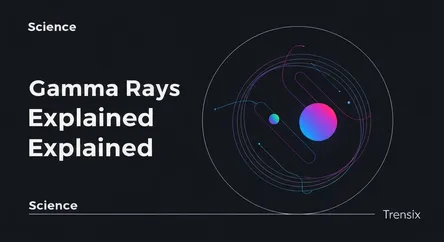Science
Gamma Rays Explained

Discover gamma rays, the most energetic form of light. Learn about their cosmic origins, from supernovae to black holes, and their uses on Earth.
What is it?
Gamma rays are the most energetic form of electromagnetic radiation, sitting at the very end of the spectrum beyond X-rays. They possess the shortest wavelengths and highest frequencies. Produced by the hottest and most violent events in the cosmos, gamma rays are generated by phenomena like supernovae (exploding stars), neutron stars, pulsars, and the regions surrounding black holes. On Earth, they are also produced by nuclear explosions, lightning, and the radioactive decay of elements.
Why is it trending?
Astronomers are increasingly using advanced telescopes, like the Fermi Gamma-ray Space Telescope, to study the universe through a gamma-ray lens. This is leading to breakthroughs in understanding extreme physics and cataclysmic events. The study of Gamma-Ray Bursts (GRBs), the most powerful explosions known, provides unique insights into the birth of black holes and the lifecycle of massive stars. Recent observations continue to challenge existing theories about the universe's most violent processes.
How does it affect people?
While cosmic gamma rays are dangerous, Earth's atmosphere protects us from them. On the ground, exposure to high levels of gamma radiation is harmful to living tissue, causing cellular damage. However, this powerful energy is also harnessed for good. In medicine, controlled beams of gamma rays are used in radiotherapy, such as the Gamma Knife, to precisely target and destroy cancer cells while sparing surrounding healthy tissue. They are also used for sterilizing medical equipment and in industrial imaging to inspect materials.